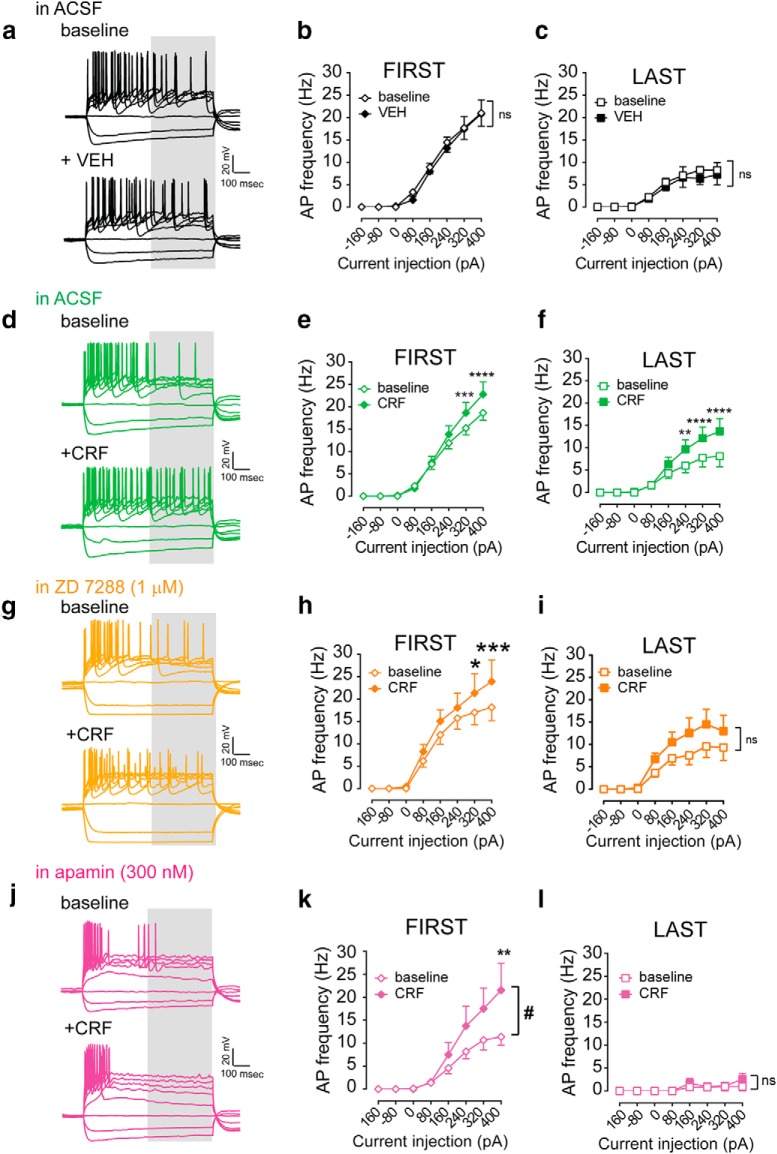Figure 5.
CRF reduces spike accommodation in CIN which is attenuated by sK channel blockade. a, Representative voltage traces recorded from striatal CIN in response to current injections (−160 to 400 pA, +80 pA steps) before and after vehicle application. b, Average input-output response of NAc CINs for the first 400 ms of an 800 ms sweep before and after vehicle application. c, Average input-output response of NAc CINs for the last 400 ms of an 800 ms sweep before and after vehicle application. d, Representative striatal CIN voltage response to depolarizing current injections (−160 to 400 pA) before and after CRF application. e, Average input/output response of NAc CINs for the first 400 ms of an 800 ms sweep before and after CRF application. f, Average input–output response of NAc CINs for the last 400 ms of an 800 ms sweep before and after CRF application. g–i, Representative voltage traces (g), input–output response for first 400 ms (h), and last 400 ms (i) before and following CRF application in the presence of ZD 7288. j–l, Representative voltage traces (j), input–output response for first 400 ms (k) and last 400 ms (l) before and following CRF application in the presence of apamin. ns denotes no statistical significance; asterisks denote statistical significance with p < 0.05 (*), p < 0.01 (**) and p < 0.001 (***) for corrected post-hoc t-test; and # denotes a significant interaction by 2-way RM ANOVA.

